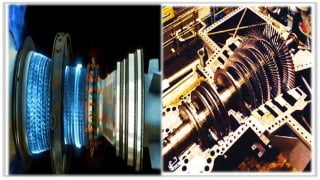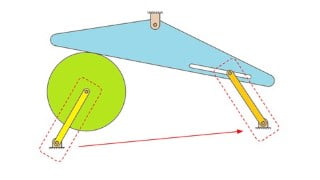Free Mechanical Engineering Tutorial – Energy Engineering -III
Learn about the importance of cooling towers and their impact on the environment in this Energy Engineering course. With over 31 years of experience, the instructor provides practical insights and covers topics such as types of cooling towers, pros and cons, and environmental impacts. Perfect for Mechanical Engineering and Diploma students.
The said course is a continuation of Energy Engineering subject _I and Energy Engineering_ II already uploaded on this Udemy Platform. I am glad to upload the series of Energy Engineering course as getting very good response from the students. The said course consists of Introduction to cooling towers, Types of cooling towers, Cooling tower, Pros and Cons of Each type, Dry Cooling tower concepts, Cooling ponds. Also another part i.e. Environmental impacts of thermal power plants is been discussed in detail . The said course is explained with Video contents and resource files attached for your reference. This course is explained by me with some practical experience about 31 years in the same field.
1.Importance of cooling tower:
As the name implies Cooling water cools the excess heat from water incurred during industrial operations into atmosphere. During this the water and the air come in contact in order to lower the temperature of the water circulating in various systems. They either use evaporation or cooling of the fluid (water) to do so. Cooling towers are widely used in oil refineries, petrochemical plants, thermal power plants, nuclear plants, food processing plan ts, natural gas plants etc. The cooling towers are normally placed within the industries. The cooling tower nozzles spray the hot water into the “fill media” where there is maximum surface area and this leads to water-air contact. In this way the water is cooled.
In view of more water requirement in Power plant, cooling water plays an important role in reduction of water quantity by reuse of the cooling water circuit, This concept is very useful where water shortage exists.
The methods may differ slightly in different types of cooling towers but the basic method is same. They mostly use evaporative cooling that can cause a lot of water loss. In this era of modern science and awareness such a water loss cannot be hauled. Therefore, latest industry has drift eliminators for cooling towers.
Most of the cooling towers use evaporative cooling that evaporates small droplets of pure water that give no such harm However there is loss of liquid droplets that contain chemicals within them which can affect the environment badly.
This can cause pollution but the cooling towers have efficient components known as drift eliminators. The drift eliminators are designed in such a way that they capture the water droplets that pertain in the air steamer of the cooling tower. They not only prevent them from damaging the environment but also save water by recycling it.
2. Impact of Thermal Power Plant on Environment
About 65 % of the energy generated from Coal based thermal power plants in India. Coal is burnt into the combustion chamber of boiler and its heat is utilized to convert water into useful steam which in turn is used to generate electricity with the help of turbine- generator combination. The thermal power plant has serious impacts on land , soil, air and various social impacts the thermal power plant are also said to emit large amount of mercury and generate large quantity of fly ash which destroys the surrounding environment. These plants also consume a large amount of water. Due to these problems they require a proper Environmental impact assessment before commencement of the project. Thermal Power Plant affects environmental segments of the surrounding region very badly. Large amount of SOx, NOx & SPM are generated which damage the environment and are highly responsible for deterioration of health of human beings, animal kingdom as well as plants
Who this course is for:
- The course is intended for Third year / final Year Mechanical Engineering Students and also Diploma students
User Reviews
Be the first to review “Free Mechanical Engineering Tutorial – Energy Engineering -III”
You must be logged in to post a review.







There are no reviews yet.